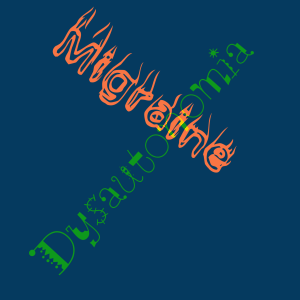Dysautonomia and Migraine
Yesterday we took a quick look at dysautonomia symptoms and the relationship between dysautonomia and migraine. Today we’re going to talk a little about what you can expect, and what you can do, if you have both migraine and a dysautonomia disorder.
 Your prognosis will vary drastically depending on what type of dysautonomia you have been diagnosed with. As we mentioned yesterday, some types of dysautonomia are progressive, and can shorten your life. Other types are chronic, and never go away completely. Some resolve on their own. Some are severely disabling (limiting your ability to get out of bed), while others are mild.
Your prognosis will vary drastically depending on what type of dysautonomia you have been diagnosed with. As we mentioned yesterday, some types of dysautonomia are progressive, and can shorten your life. Other types are chronic, and never go away completely. Some resolve on their own. Some are severely disabling (limiting your ability to get out of bed), while others are mild.
So it is very important to get a specific diagnosis, and to talk to a specialist who can guide you. There is help available, but you will need patience to find what works and to improve your quality of life.
Lifestyle Changes
In general, you will fight dysautonomia symptoms with changes in lifestyle. Diet changes can be key – drinking plenty of water, increasing your salt intake, avoiding sugar, artificial sweeteners, alcohol, and caffeine, and eating several small meals during the day, for example.
Exercise is important, but can be very challenging for patients with dysautonomia. A gradual increase in moderate exercise is usually planned.
As with migraine, an overall healthy lifestyle will go a long way. But there are some specific changes you may need to make depending on your specific diagnosis.
Other (non-drug) Treatments
Other treatments may include wearing compression stockings and elevating the head of your bed. Sometimes supplements are recommended.
Drugs: A Balancing Act
Sometimes drugs are used for dysautonomia as well, but this can be a very challenging balancing act.
For one thing, some drugs that you may be familiar with can actually lead to dysautonomia, such as some drugs taken for high blood pressure or depression – and yes, drugs for migraine. You may need to take a medication which will contribute to your symptoms, but hopefully you can find something that will have only a small impact (I’m talking about changing to a different but similar medication). Your doctor will need to monitor you carefully. Watch your symptoms, but don’t expect them to go away completely.
If you have a dysautonomia from another disorder, such as diabetes, your treatment will likely focus on the “primary” condition. In some cases, you may take medications for both, but again, it’s a difficult balancing act.
Some medications that may be used in some cases include fludrocortisone, midodrine, and ephedrine. Medications will require monitoring and adjustment over time.
You may need to adjust your migraine medication, because it could be making your symptoms worse. This is another reason why it is helpful to speak to a specialist.
Selected Sources and Resources
Here are some of the key sources I’ve used in these two articles, as well as resources you can use to learn more:
- What is Dysautonomia? (A brief summary from the National Institute of Neurological Disorders and Stroke)
- Dysautonomia Youth Network of America, Inc. (a wealth of information on dysautonomias – don’t miss their pdf brochures)
- Clinical Evidence of Dysautonomia (a technical article from Clinical Methods: The History, Physical, and Laboratory Examinations.)
- Dysautonomia (summary and a list of organizations from the Cleveland Clinic)
- Dysautonomia Links (from the American Dysautonomia Institute)
- Postural orthostatic tachycardia syndrome (from the US National Library of Medicine)
- Dysautonomia: Invisible, Often Misdiagnosed (experiences from someone with a form of dysautonomia. Remember, every type is very different.)
